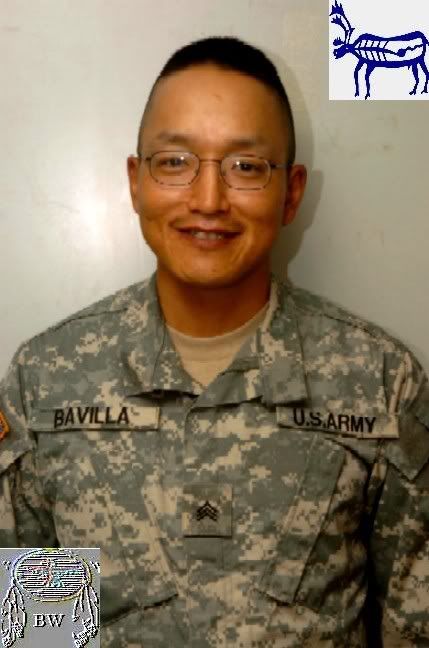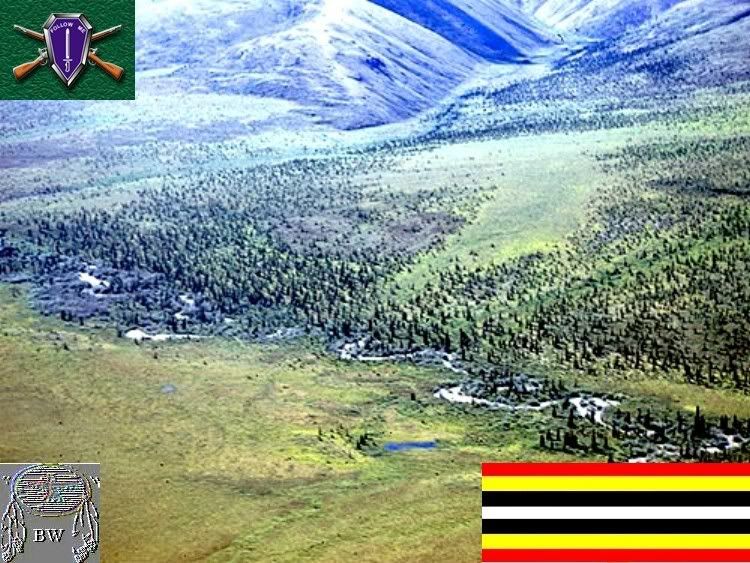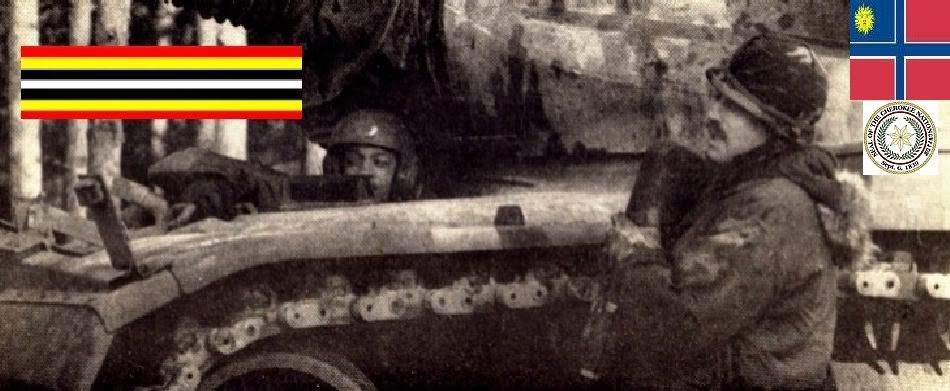|

United States Army Sergeant Paul Bavilla
Warriors Citation
Soldiers of the Alaska National Guard's 1st Battalion, 297th Infantry, describe SGT Paul Bavilla as "a shining star, a hero
among his people," said the unit's SFC Todd Patnode. Bavilla is a Yupik Eskimo from Togiak, Alaska. At the age of 35 and with
15 years of Alaska National Guard service, he recently deployed with his unit from Nome to Iraq. In the tradition of his ancestors,
Bavilla is known as an "Eskimo Scout," a title first given during World War II to Alaska natives serving in specialized Army
reconnaissance units. The Scouts were instrumental in the battle against Japanese forces that had invaded the Aleutian Islands.
Today, the term Eskimo Scout refers to a warrior who is an expert at surviving and living through Alaska's harsh weather conditions
and using the resources the surrounding environment offers. "When I first joined the Guard 15 years ago, there were around
2,500 Eskimo Scouts still serving," Bavilla said. "Now there couldn't be more than 1,200 Scouts serving in the military."
Today's Scouts continue to train in the same areas and under the same conditions as their predecessors. Most live modest lives
in remote villages, hunting wild animals and enduring extreme weather conditions. "This guy is as hardcore as they come,"
Patnode said of Bavilla. "He goes out in sub-zero temperature and lives in the wilderness for months at a time."

During World War II, the Alaska Territorial Guard-commonly known as Eskimo scouts--faithfully patrolled 5,000 miles of Aleutian
coastline and 200,000 miles of tundra, rescuing downed US airmen. An Army major, Marvin "Muktuk" Marston, organized the Eskimo
Scouts, Alaska's tundra warrior army, at Nome and other areas, to defend Alaska against attack. Since 1949, the Army National
Guard has retained scout battalions in rural Alaska. These units, largely comprised of Alaskan Natives that were residents
of their respective rural areas, have been referred to as the "eyes and ears of the North." The official mission for these
rural units was to guard Alaska against invasion or intrusion by the Soviet Union. The Eskimo Scouts are the only warriors
of the National Guard who have a continuous active duty mission. This unit was organized during World War II, and the wives
of scout battalion members have always been involved in patrol missions. Women were admitted as official members in 1976,
and only then began to receive pay, benefits and recognition for their work. Scouts currently patrol ice flows in the Bering
Straits, monitor movements on the tundra, and perform Arctic search and rescue efforts as required. With the dissolution of
the Soviet Union in the early 90s, the necessity for scout battalions was significantly reduced. The National Guard, when
forced by the end of the Cold War to re-examine the mission of the warriors in rural Alaska, decided to convert the scout
units to more conventional support battalions. From: historical accounts & records


LINK TO BRAVEHORSE WARRIORS VOLUME TWO
|

